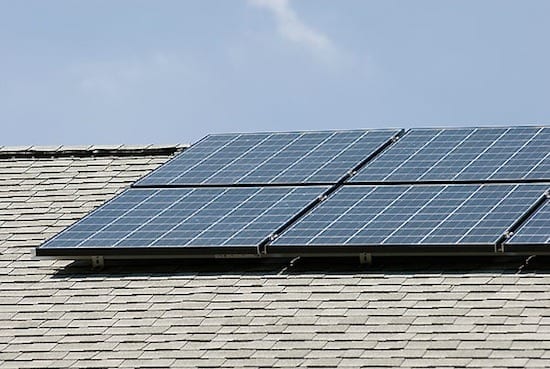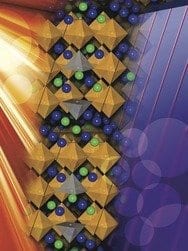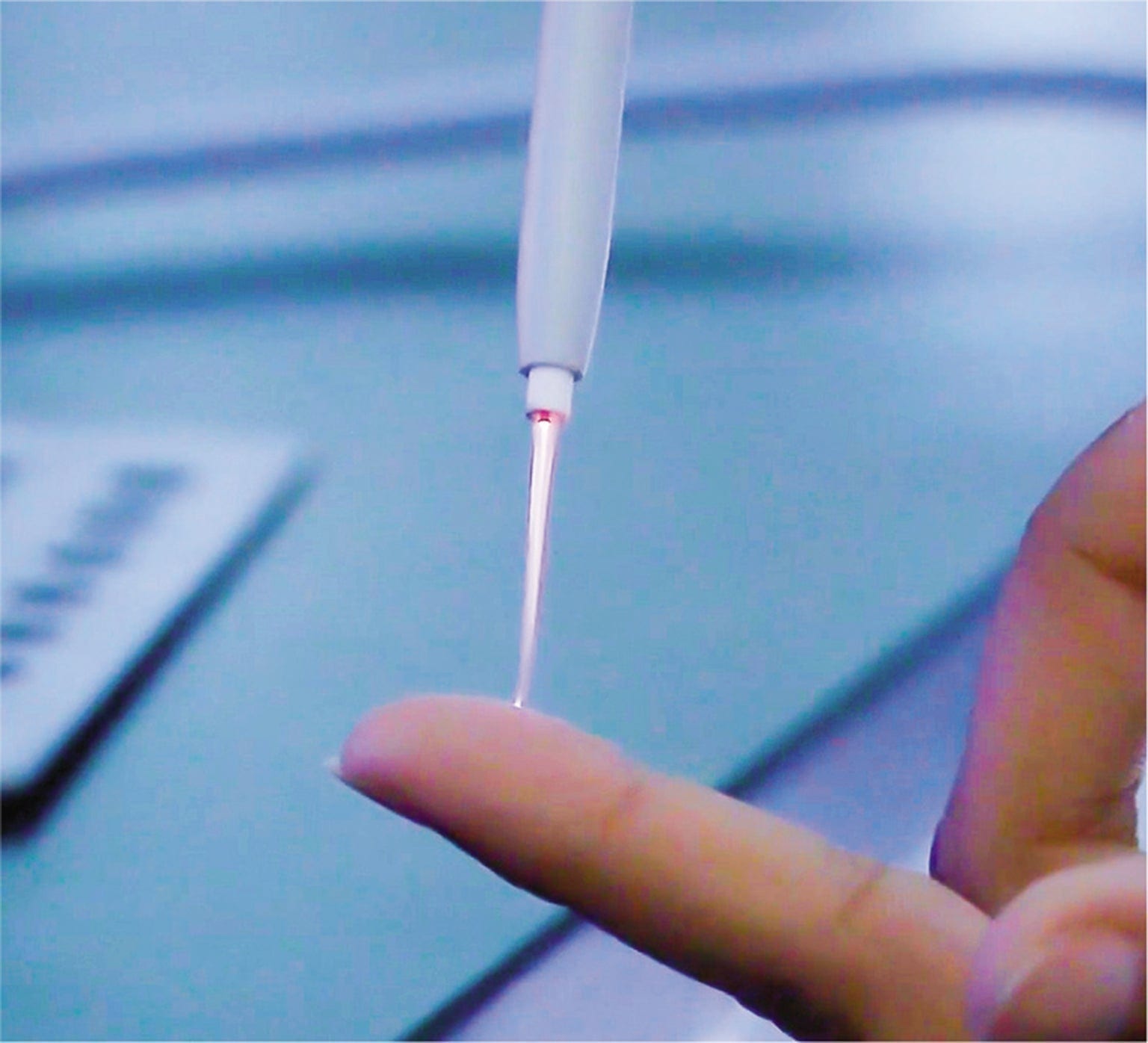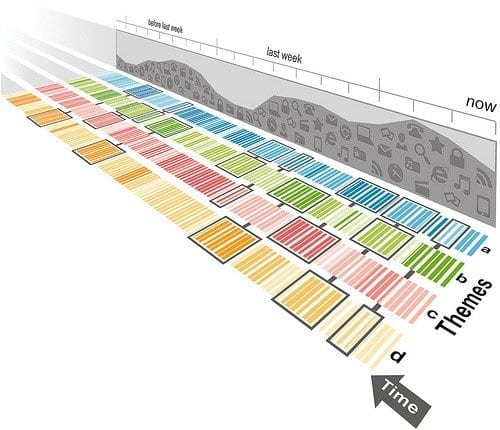
A design for solar panels that can simultaneously generate power from sunlight and store power reserves for later, all within a single device.
The potential energy available via solar power might seem limitless on a sunny summer day, but all that energy has to be stored for it to be truly useful. If you see a solar panel on a rooftop, in a large-scale array, or even on a parking meter, a bulky battery or supercapacitor is hidden just out of sight, receiving energy from the panel through power lines.
However, that’s a storage method that doesn’t scale well for solar-powered devices with no space for a battery pack.
In a quest for a smaller, more self-sustaining solar power source, a UW-Madison electrical engineer has proposed a design for solar panels that can simultaneously generate power from sunlight and store power reserves for later, all within a single device.
Hongrui Jiang and his students developed the idea, published in the journal Advanced Materials June 6. Jiang is the Vilas Distinguished Achievement Professor of electrical and computer engineering at UW-Madison and specializes in microscale devices. He and his students developed the technology as an offshoot of a National Institutes of Health grant to design a self-focusing contact lens that adapts to the eyes of adults suffering from presbyopia, a natural aging process that stiffens the lens and reduces the eye’s ability to focus, especially at short distances.
To power that contact lens, Jiang and his team have worked out a design that balances energy harvesting, storage and usage. “We needed a multi-functional and small-form-factor device in order to integrate it all into a single contact lens structure,” says Jiang.
The top layer of each photovoltaic cell is a conventional photo electrode, converting sunlight into electrons. During that conversion process, the electrons split off into two directions: most electrons flow out of the device to support a power load, while some are directed to a polyvinylidene fluoride polymer (PVDF) coated on zinc oxide nanowires. The PVDF has the high dielectric constant required to serve as an energy storage solution. “When there’s no sunlight, the stored power will come back through the nano wires to power the load.”
The final design allows for a standard-size solar cell that can simultaneously power a device and store energy for later use, creating a closed-loop system for small-scale applications of solar energy. “We can have some energy set aside locally, right in the panel, so that when you need it, you can get it,” says Jiang.
Other such solar panels — referred to as photovoltaic self-charging cells — have been around for a while, but the ability to provide energy continuously, rain or shine, sets Jiang’s apart.
The Latest Bing News on:
Solar panels that can simultaneously generate power from sunlight and store power
- MIT spinoff unveils continuous solar power solution technologyon May 1, 2024 at 5:01 am
Enter 247Solar, a company pioneering a novel approach to concentrated solar power (CSP) that addresses these limitations. Their high-temperature systems boast overnight thermal energy storage, ...
- Anker SOLIX X1 offers effective solar power storage for your home backupon April 30, 2024 at 11:35 am
The Anker SOLIX X1 is a home backup and solar power storage solution that incorporates some truly innovative features. You have to read it to believe it.
- Thermal Battery Solar Technology Soon to Rapidly Deliver On-site Power Generation for Data Centerson April 26, 2024 at 3:25 pm
Exowatt has announced a new type of self-contained solar power generation, set to be available at scale later this year.
- mSAIL: Milligram-Scale Multi-Modal Sensor Platform for Monarch Butterfly Migration Trackingon April 16, 2024 at 9:19 am
Each fall, millions of monarch butterflies across the northern US and Canada migrate up to 4000km to overwinter in specific mountain peaks in central Mexico. To track monarchs precisely and study ...
- The 5 best home cameras for 2024on January 10, 2024 at 10:56 am
Resolution: 4K | Indoor or Outdoor: Both | Night Vision: Yes | Field of View: 135-degrees (8x zoom) | Monthly Fee: $0 | Power: Battery with solar panels ... hours of sunlight per day, operate ...
The Latest Google Headlines on:
Solar panels that can simultaneously generate power from sunlight and store power
[google_news title=”” keyword=”solar panels that can simultaneously generate power from sunlight and store power” num_posts=”10″ blurb_length=”0″ show_thumb=”left”]
The Latest Bing News on:
Photovoltaic self-charging cells
- Best Solar Panels For Homes Of 2024on April 30, 2024 at 4:10 am
Making a move to equip your home with solar energy solutions has never been easier. Solar tax credits and rebates designed to reward solar power adopters are readily available as the renewable ...
- Solar Energy Newson April 26, 2024 at 5:00 pm
Apr. 8, 2024 — Researchers have fabricated a new four-terminal organic solar cell with a tandem configuration with a 16.94% power conversion efficiency (PCE). The new device is composed by a ...
- The Myths And Truths About Why Electric Cars Don't Have Solar Panelson April 25, 2024 at 7:00 am
Although solar energy alone cannot fully power a car for real-world usage, manufacturers are overcoming challenges and getting closer by the hour.
- Solar cells 20x thinner than hair power long-duration drone flightson April 20, 2024 at 2:12 am
Their solution offers an ultra-lightweight, flexible solar cell that will enable long-term, self-sufficient energy generation. With a relatively high degree of stability and an enhanced power output ...
- Solar-cell-packin' drone uses sunlight for on-the-spot rechargingon April 19, 2024 at 12:19 pm
Multirotor drones may one day be able recharge their batteries while out and about, instead of having to return to a charging station. They could do so via onboard ultra-thin solar cells, which have ...
- Solar cells 20 times thinner than a strand of human hairon April 18, 2024 at 12:42 am
Solar-Powered Drones Support Sustainable Aviation. Developed by researchers at the Johannes Kepler University Linz, the new and ...
- System design for PV-driven hybrid EV charging stationson April 16, 2024 at 5:01 pm
Charging EVs with the help of on-site solar arrays and battery energy storage systems (BESS) is an attractive proposition as it reduces reliance on fossil fuels, optimizes self-consumption ...
- New quantum solar cell material promises external quantum efficiency of 190%on April 10, 2024 at 5:00 pm
Researchers at Lehigh University in the United States developed a new thin-film solar cell absorber material that reportedly features an average photovoltaic absorption of 80% and an external ...
- The ‘import restrictions’ on solar PV cells | Explainedon April 9, 2024 at 9:00 pm
And until January of 2023-24, data from the Ministry of Commerce’s Import-Export showed that China accounted for 53% of India’s solar cell imports, and 63% of solar PV modules. Ratings agency ...
- Philips goes solar with A6219 self-charging sports headphoneson January 23, 2024 at 10:06 am
That's because the Philips A6219 GO sports headphones feature Powerfoyle solar-cell technology ... with a further 21 hours in the included charging case. Fast charging allows for an hour of ...
The Latest Google Headlines on:
Photovoltaic self-charging cells
[google_news title=”” keyword=”photovoltaic self-charging cells” num_posts=”10″ blurb_length=”0″ show_thumb=”left”]










